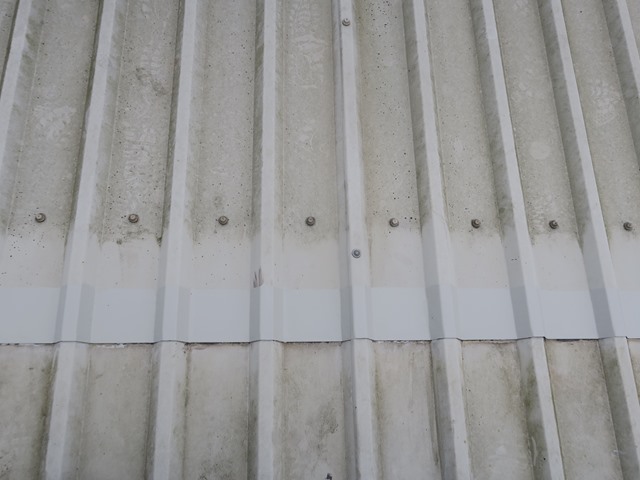The steel roof sheets to this industrial unit in Hartlebury, Worcestershire were affected by cut edge corrosion and peel-back of the original protective finish.
The landlord took a proactive maintenance approach to treat the corrosion before it became too advanced, prior to a new tenancy being commenced.
The cut edge corrosion affected the end-laps of the roof sheets at the eaves and also the mid-lap joints, which if left, could have become a much larger problem.
Historically, the way mid-lap corrosion has been treated, is to prepare back the surface of both the uppermost and bottommost roof sheets where they overlap and to apply a silicone seal over the overlapping roof sheets.
Apparently, this is to stop moisture from entering the joint, but in reality, it can often create a latent defect, because the silicone splits and water enters and become trapped between the upper and lower roof sheets.
Liquasil’s approach is to treat only the corrosion, which means that the bottommost sheet is not touched and no silicone sealant is applied to the mid-lap joint.
This has several advantages:
- Far fewer materials are used
- No plastic silicone tubes are sent to landfill
- Installation costs significantly reduced
- Water is able to enter and drain from the mid-lap joints
- More aesthetically pleasing
- Corrosion is treated with an anti-corrosion primer
How Cut Edge Corrosion Occurs
Cut edge corrosion is the most common defect seen on industrial metal profile roofs. Whilst it might not cause significant problems in its earliest stages, the quicker it is treated, the better it is.
This is because the cut edges, where the roof sheets are shaped and cut from a coil of steel during manufacture, are completely unprotected.
The uppermost side of the roof sheet is most commonly coated with a thick plasticised finish with a slight pattern to deflect sunlight, whereas the underside of the roof sheet is coated with a thin protective coating.
As the roof ages, the exposed cut edge begins to rust and the thicker plasticised coating begins to peel back from the steel substrate.
Once exposed, the steel substrate begins to rust, which over time, accelerates and can, in severe cases, perforate the steel, making any repairs more difficult and costly.
Caught quickly, cut edge corrosion need not be an expensive problem to solve. Using Liquasil’s Flexlap cut edge corrosion treatment makes it considerably less expensive too.
For more details about how Liquasil’s range of protective roof coating systems can be used on your client’s or your own industrial pitched roofs, please call one of our knowledgeable building surveyors on 0121 709 5352.
We will be able to assist with systems specifications and guidance on the most appropriate system for your needs.

